What Do Ducks Eat?
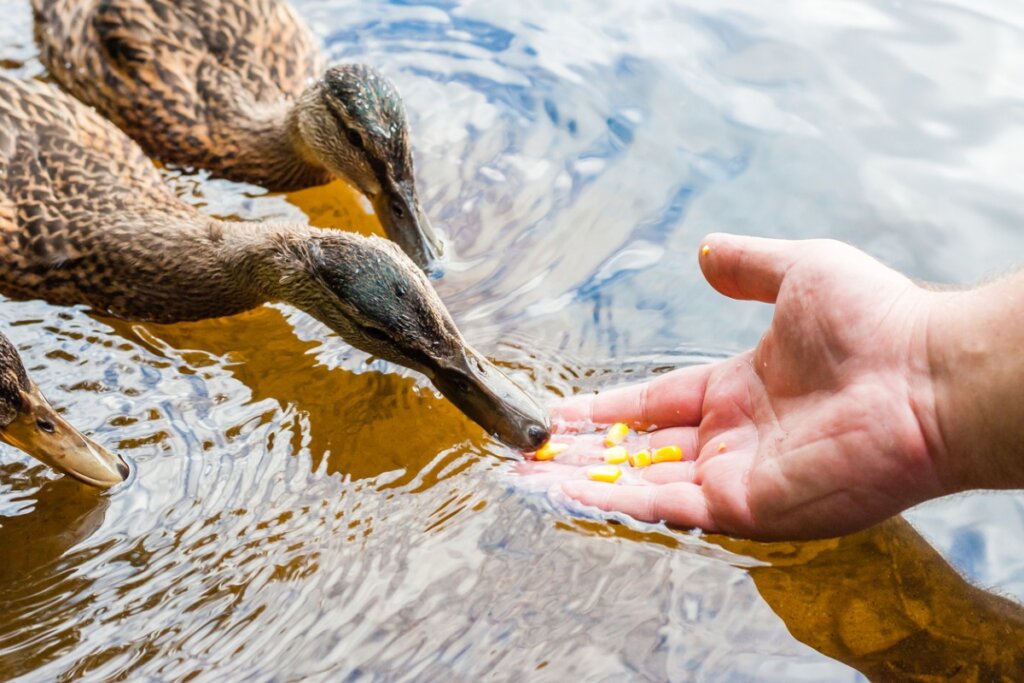
Ducks are found on all continents except the Antarctic. In addition to this, they have an unusual adaptive capacity and have managed to reach islands such as Hawaii, Macaronesia, and the Galapagos. How are they able to make new environments their own so easily? What ducks eat and their life strategies hold part of the answer to this question.
Although humans may associate a duck’s diet with a few pieces of moist bread floating on a pond, the truth is that these birds consume many more types of food. Here we’ll tell you all about the diet of these land- and water-dwelling birds.
What are ducks?
The term duck refers to a wide variety of bird species belonging to the family Anatidae. There are an estimated 156 types or species of ducks, which are divided into 6 families (Anatinae being the most abundant). The duck par excellence is Anas platyrhynchos, also known as the Mallard. However, there are many more.
The duck’s body shape is generally elongated and their necks are long, although not as long as that of swans or geese (a clear differentiating feature). They also tend to have a cylindrical trunk, as many of them have to dive underwater to hunt their prey. The beak is very wide and contains serrated structures (which are very developed in filtering species).
As for flight, many ducks have short and pointed wings, which are strong and able to make fast beats. However, some birds included in this group (such as the genus Tachyeres) are practically incapable of taking flight.
While some ducks are unable to fly, others make very costly migrations to winter in the most resourceful areas.
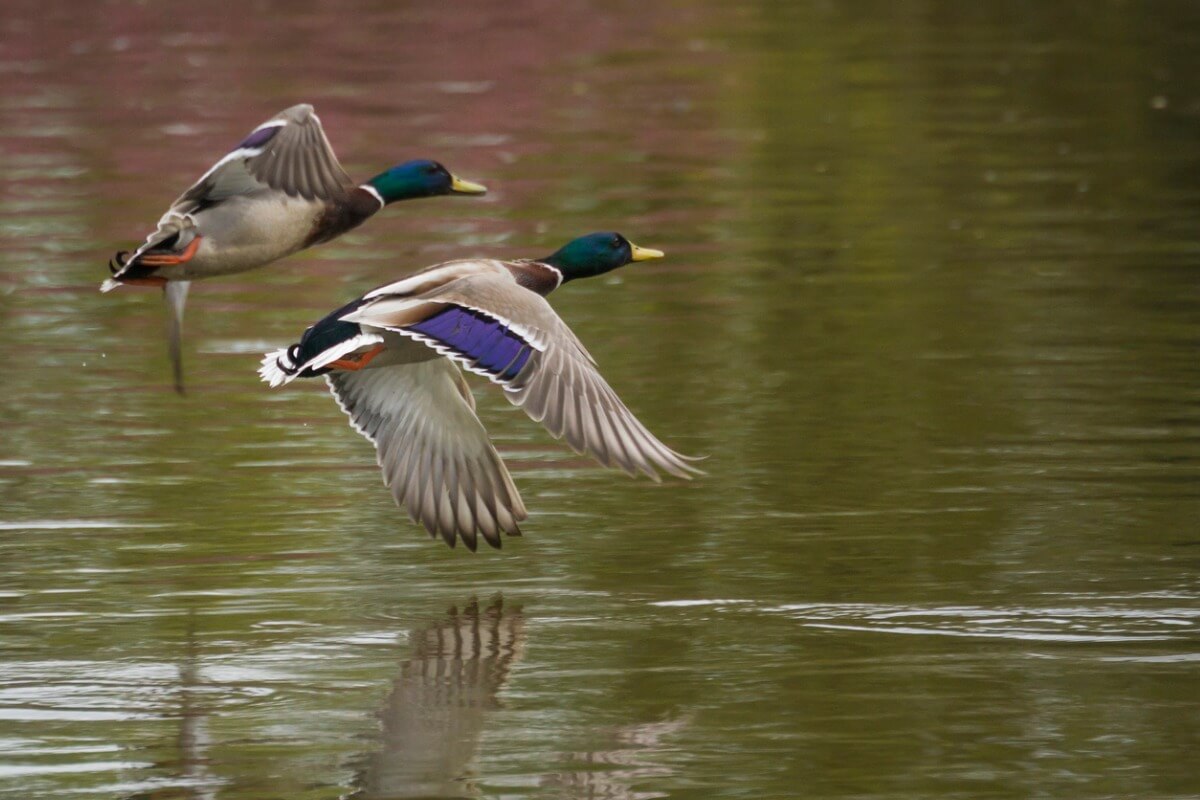
What do wild ducks eat?
As we’ve already said, the diet of ducks depends a lot on the species, their geographical location and their condition of freedom (or captivity). To get to know a little better the variety in these animals, we’re going to give you some specific examples. Don’t miss it!
1. The feeding of the Mallard (Anas platyrhynchos)
The mallard represents the most widely-distributed duck species in the northern hemisphere. It inhabits North America, Asia, Europe, and even North Africa. It’s a bird that’s well-known for its migratory potential and the vast majority of ducks kept in captivity belong to this species.
The mallard’s diet is omnivorous. In addition, it’s a very flexible bird as far as its diet is concerned. The bulk of its diet is based on plant matter, seeds, roots and tubers, but it doesn’t turn its beak up (!) at aquatic invertebrates, insects (dragonflies, flies, butterflies, moths and more) and small crustaceans either.
Interestingly, it has been shown that laying females consume much more animal matter (70%) than non-laying females (37%) during the mating season. This reflects the fact that egg laying is a demanding activity that requires a lot of protein.
This duck’s sexual dimorphism is extremely noticeable. Males have green feathers with metallic tones on the head and contrasting colors, while females are brown.
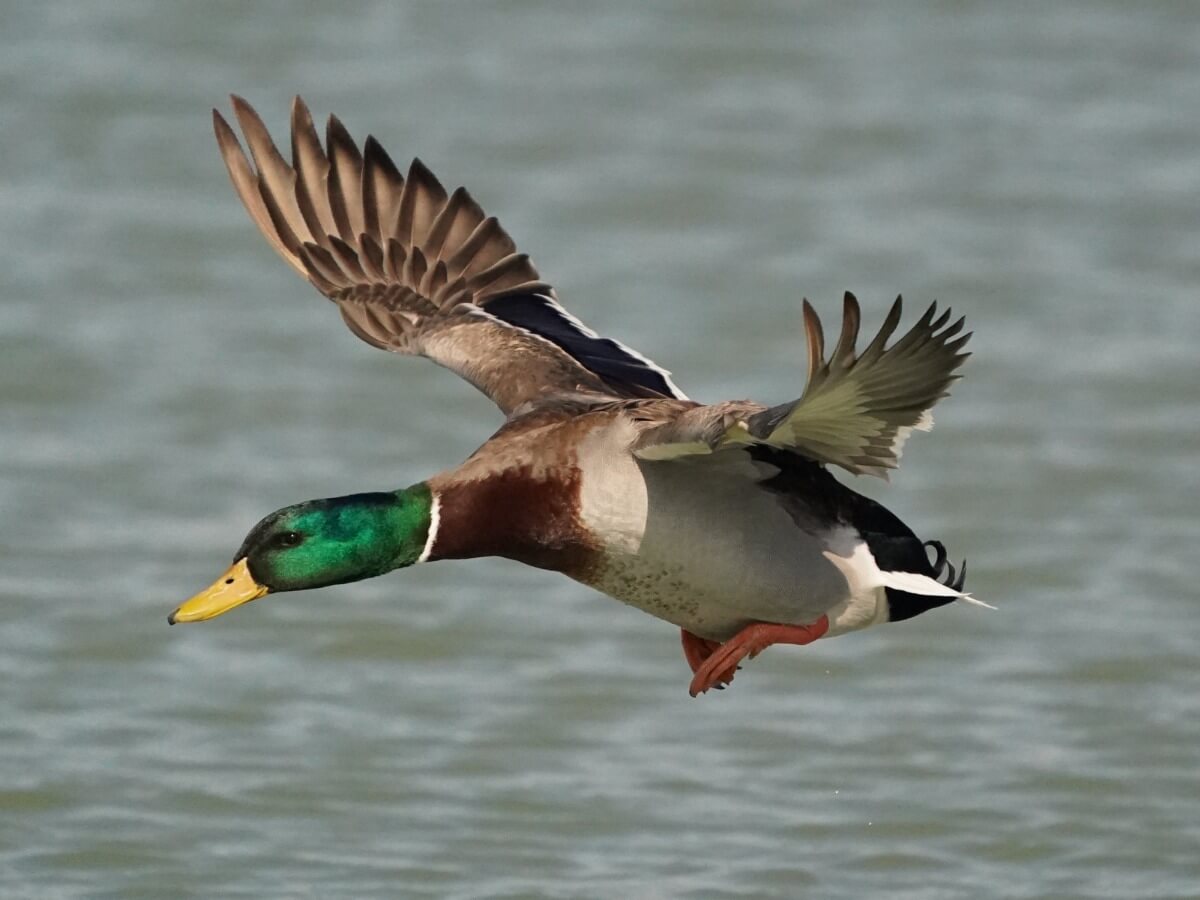
2. The diet of the bufflehead (Bucephala albeola)
The bufflehead is a typical migratory bird in North America and the southern United States. Males are very conspicuous because of their greyish-black coloration and a very evident white line under their eyes. Females, on the other hand, are somewhat more uniformly greyish.
These ducks forage underwater. In freshwater ecosystems, they’re mostly insectivorous, while in saltwater they hunt crustaceans and mollusks. Aquatic plants and fish eggs are also an important part of their diet.
These ducks show a certain predilection for aquatic invertebrates that’s more pronounced than that of the mallard.
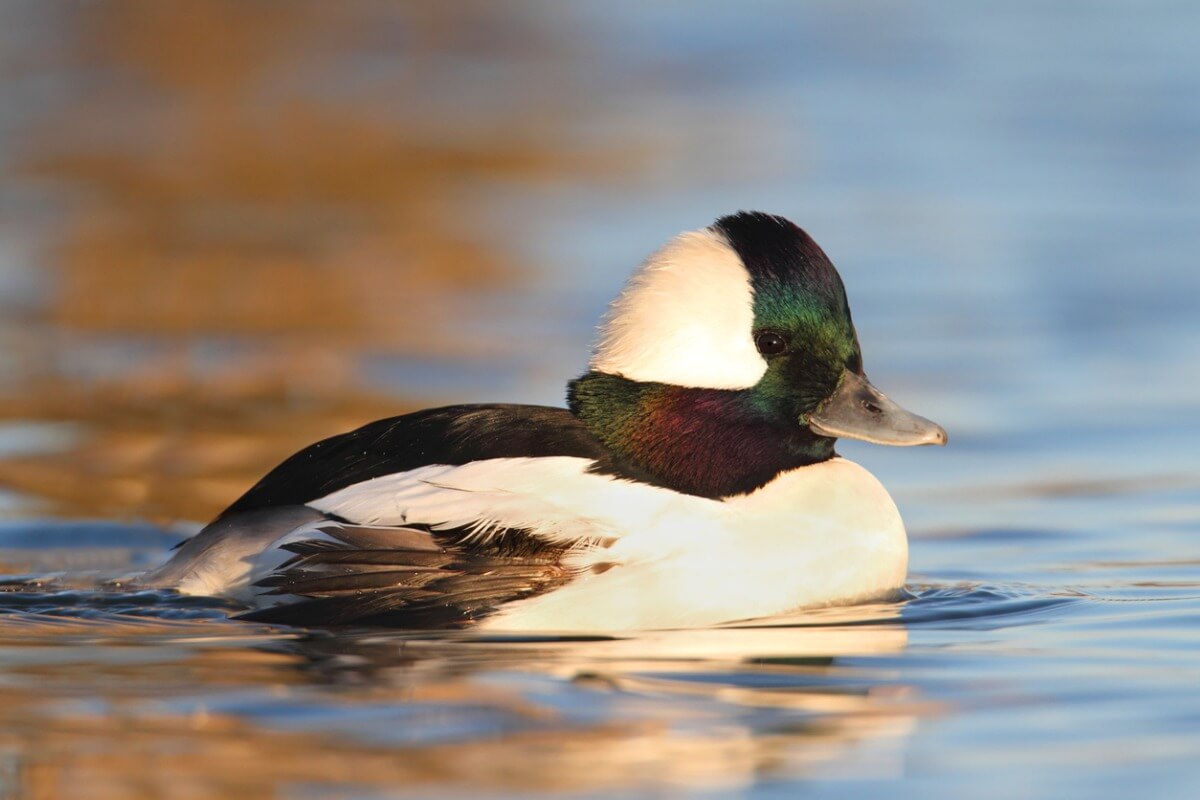
3. The diet of the common merganser (Mergus merganser)
This duck is quite different from those we’re used to seeing in ponds and lakes in urban environments. It’s a large, fast bird with a streamlined body and a very long, narrow bill. In addition, it has serrated internal teeth that act as a hook to make it easier for it to catch prey.
As you can imagine, the common merganser is mainly piscivorous (it feeds on live fish). It hunts fish in both fresh and salt water, although it doesn’t miss the opportunity to prey on mollusks, crustaceans, insect larvae, and other invertebrates. Very sporadically it also feeds on small mammals, reptiles, and amphibians.
It seems that the tone of the plumage of the males depends to some extent on the carotenoids ingested in their diet.
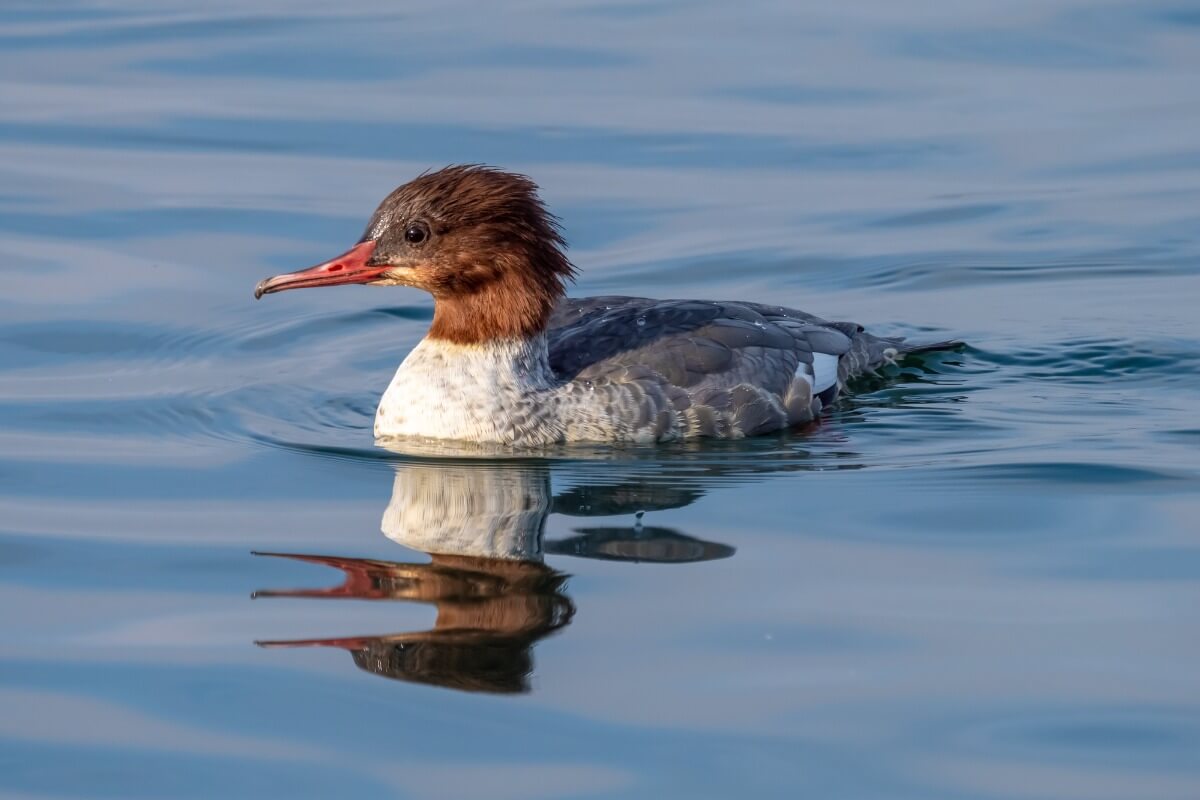
What do ducks eat in captivity?
We’ve already explored the different dietary choices of several very different species of ducks. In conclusion, we’d like to summarise the diet of the Mallard in captivity (Anas platyrhynchos):
- When they’re young (up to 3 weeks of age), ducklings are fed on specific feed for young. The percentage of protein provided at this stage is high – at 18-20%.
- Between 3 and 20 weeks of life, the transition to a young duck or chicken feed can be made. This should contain 15% protein.
- As adults, ducks can already consume general feed as the basis of their diet. In addition, they require calcium powder on a constant basis to maintain their bone health. Their feed should be supplemented daily with vegetables such as beetroot, peas, corn, cabbage, alfalfa and lettuce. They can also be offered crustaceans and dead invertebrates sporadically.
Although it’s very common in parks and some recreation centers, it isn’t good to give ducks bread. It contains a lot of carbohydrates and will only make them too fat in the long run. It’s much better to use a specific feed for them as a base and mix it with vegetables and some seafood sporadically.
As you can see, the answer to the question of what ducks eat depends on the species, their region of origin and their status in the ecosystem. They’re omnivorous animals, but some choose to eat mostly plant matter, while others have specialized in hunting fish and invertebrates. The diet of each species is based on what’s available in its ecosystem.
All cited sources were thoroughly reviewed by our team to ensure their quality, reliability, currency, and validity. The bibliography of this article was considered reliable and of academic or scientific accuracy.
- Swanson, George A.; Meyer, Mavis I.; Adomaitis, Vyto A. (1985). «Foods consumed by breeding mallards on wetlands of south-central North Dakota». Journal of Wildlife Management 49 (1): 197-203.
- Bufflehead, ADW. Recogido a 17 de noviembre en https://animaldiversity.org/accounts/Bucephala_albeola/
